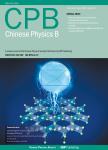Three-dimensional turbulent flow over cube-obstacles
Three-dimensional turbulent flow over cube-obstacles作者机构:School of Aerospace EngineeringTsinghua University Faculty of ArchitectureThe University of Hong Kong
出 版 物:《Chinese Physics B》 (中国物理B(英文版))
年 卷 期:2017年第26卷第1期
页 面:278-284页
核心收录:
学科分类:08[工学] 080103[工学-流体力学] 0805[工学-材料科学与工程(可授工学、理学学位)] 0704[理学-天文学] 0801[工学-力学(可授工学、理学学位)]
基 金:supported by the National Natural Science Foundation of China(Grant No.50876053)
主 题:turbulent flow channel flow large-eddy simulations coherent structures
摘 要:In order to investigate the influence of surface roughness on turbulent flow and examine the wall-similarity hypothesis of Townsend, three-dimensional numerical study of turbulent channel flow over smooth and cube-rough walls with different roughness height has been carried out by using large eddy simulation(LES) coupled with immersed boundary method(IBM). The effects of surface roughness array on mean and fluctuating velocity profiles, Reynolds shear stress, and typical coherent structures such as quasi-streamwise vortices(QSV) in turbulent channel flow are obtained. The significant influences on turbulent fluctuations and structures are observed in roughness sub-layer(five times of roughness height).However, no dramatic modification of the log-law of the mean flow velocity and turbulence fluctuations can be found by surface cube roughness in the outer layer. Therefore, the results support the wall-similarity hypothesis. Moreover, the von Karman constant decreases with the increase of roughness height in the present simulation results. Besides, the larger size of QSV and more intense ejections are induced by the roughness elements, which is crucial for heat and mass transfer enhancement.



